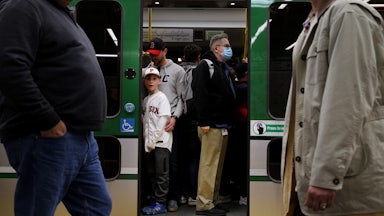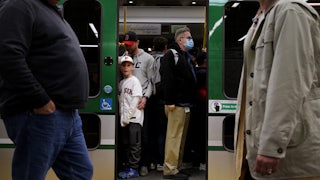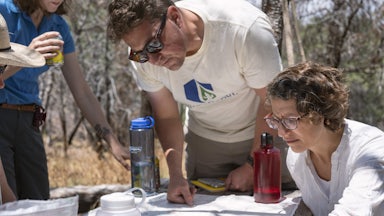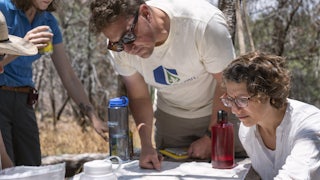For more than two years, numbers have helped make sense of Covid-19: its toll, its risks, the need to ramp up precautions before surges or the ability to lessen them in lull times. But when it comes to statistics on mortality, it can be tricky to figure out what the numbers are actually telling us.
Simply looking at the raw mortality numbers, some pandemic watchers in recent months have challenged assumptions about which communities are hardest hit by Covid and how well vaccines are working. Some have pointed to the narrowing gap in deaths among white people compared to other races and ethnicities, suggesting that a focus on those who have been marginalized within the health system was diverting resources from others in need of outreach. And as the virus has evolved, some who were hesitant about vaccines now question whether they even work, because some vaccinated people die from Covid.
But as recent research has emphasized, younger people of color are still dying more than their white peers, despite being more vaccinated—pointing to continuing inequities. And deaths among vaccinated people show not the futility of vaccines but the importance of sustained booster campaigns, especially updated boosters that will work better against a virus that has evolved significantly since the first shots went into arms. As the omicron subvariant BA.5 sweeps across the United States, capable of reinfecting droves of people, it’s vital to understand what the mortality statistics are truly telling us, and what that means for policy going forward.
It’s true that deaths among white people have increased over time more than in any other group—a troubling trend likely springing in part from under-vaccination and politicization of the crisis. “Something happened that never happened in prior pandemics, and that is, this got to be politicized,” said Robert Blendon, professor of health policy and politics at the Harvard T.H. Chan School of Public Health and the Harvard Kennedy School of Government. “We have a new underserved group called Republicans, and we never had that before,” he said. “There wasn’t a Republican view of polio or a Democratic view—you just never saw that before.”
But the high death rates for white people is also a classic case of the numbers seeming to tell us one thing and actually telling another. Looking at these numbers, you might assume that Covid has hit white communities hardest, or that white people across the board are at a greater risk of dying from Covid than nonwhite people are. That’s not the case: Communities of color still “are at disproportionate risk” from Covid, said Katelyn Jetelina, author of Your Local Epidemiologist. One reason the total number of deaths is the highest among white people is that white Americans tend to live much longer than other groups because of lifelong health disparities, and age is a leading factor in Covid mortality.
After adjusting for age disparities in the underlying population, people of color are still dying at higher rates across all age groups as compared to white people. Indigenous people are more than two times likelier than white counterparts to die from Covid-19. Black Americans are 1.7 times more likely, Hispanic Americans 1.8 times, and Asian Americans 0.8 times, according to data from the U.S. Centers for Disease Control and Prevention.
Hospitalizations, too, continue to be inequitable. Black Americans, for instance, were hospitalized nearly four times more than white Americans during the first omicron surge, according to a recent CDC report.
But there’s another set of changing numbers that critics of vaccination have pointed to: the deaths of vaccinated and even boosted people.
In January and February, around 40 percent of Covid deaths were among people who were fully vaccinated—and 12 percent to 15 percent were boosted, according to an analysis by the Kaiser Family Foundation, or KFF. Those rates have steadily risen in recent months, representing a major change from previous waves when the vaccines were highly protective against infection and illness. There are a few key reasons.
Breakthrough cases and reinfections have become much more common with new omicron variants, which are more contagious and immune-evasive—making breakthrough illness and death more likely, because the more infection there is, the greater the chance of severe outcomes.
Vaccines also wane over time, especially for older people and those who may not be able to mount lasting immune responses to vaccination. These groups also got vaccines and boosters the earliest and thus have had more time to see them wane.
The number of vaccinated people has also increased. That is undeniably a good thing, but it also means that there are more vaccinated people who might have unusually severe breakthrough cases than there were when more at-risk people were unvaccinated. In a population with a high number of vaccinated people, a bigger share of total deaths will be attributed to those vaccinated people.
But being unvaccinated is still a major risk factor for death. Only 22 percent of adults in the KFF analysis were unvaccinated, yet they accounted for 60 percent of deaths—an outsize risk. In March, unvaccinated people were eight times more likely to die of Covid infections than vaccinated people.
If anything, what the numbers show is almost the exact opposite of what critics have said: Rather than presenting a case for easing up on pandemic restrictions because the pandemic has gotten more equal and the vaccines less effective, these statistics show the importance of continued vaccination and booster campaigns, as well as the importance of other precautions—especially during surges like the one the U.S. is now experiencing.
“Vaccinations are not the only public health measure,” said Krutika Amin, a policy expert at KFF. “Other precautions, such as wearing high-quality masks and being in well-ventilated spaces, can also reduce people’s risk.”
Yet across most of the country, mandates for masks and vaccinations have dropped along with limits on the size of crowds. “It gets harder as people make their individualized decision of whether to proceed with risks to themselves or people around them,” Amin said. “And that is an issue with federal requirements coming down—states or local governments or even employers who want to mandate requirements can’t defer to ‘oh, the federal government is requiring us to do this, so we have to.’”
What the numbers do show, clearly, is the need for a public health campaign around key precautions—starting with boosters. For while politicization has made white Americans one of the least vaccinated groups (accounting for two-thirds of the unvaccinated population, despite making up 59 percent of the nation’s population, according to a KFF analysis from April), Indigenous, Black, and Hispanic Americans have a lower uptake of boosters after their initial vaccination. And while those over the age of 65 have relatively higher first booster rates, fewer than a third of them have now gotten a second booster, according to the CDC. The rate is even lower—25 percent—for those between the ages of 50 and 64 who got the first three shots but haven’t had a fourth, despite being eligible.
There are many reasons why elderly and nonwhite people might not be getting boosters, even though they were open to the initial shots. People may not realize they are eligible for boosters or that they are needed. There are no more mass vaccination centers and fewer door-to-door campaigns that made vaccines accessible, especially to those with limited or no transportation options. And federal funding is running low to mobilize booster campaigns.
“While there might have been initially a lot of information out there for people to get vaccinated and encouraging them to get vaccinated, that might not have been available to them [more recently]—which presents an opportunity to get people their timely boosters,” Amin said.
Especially in the face of future waves amid waning immunity, boosters are “incredibly important,” Jetelina said. “I am still shocked at the booster rate in the United States.”
Wide-scale booster (and initial vaccination) campaigns are still needed, experts I interviewed said. Finding “champions” who can reach friends and loved ones will be one crucial step, Jetelina said. “We know a lot of the unvaccinated change their minds because of conversations they had with family and friends.”
“Champions” are all the more important because trust in government and official sources is nearing historic lows, at 20 percent of the American populace. “Basically, a share of people no longer believe the federal government—in the numbers they put out, in their advice and their science; they’re suspicious,” Blendon said. But while people are deeply skeptical of “Washington science types,” they do trust people they know—including local physicians and health officials, who could reach out more to those not yet vaccinated or those who need boosters, Blendon told me.
Meanwhile, national coverage for tests and treatments for uninsured people has lapsed, and funding for vaccination campaigns as well as the development of more treatments and even more effective vaccines is running out. And once the national public health emergency is declared over, insurance companies might change the way they cover tests, vaccines, and treatments, Amin said.
“The gaps in our health care system that were patched, but not completely fixed, are going to come up again,” she added—whether in subsequent surges or with new public health crises. And that could continue to have devastating effects on mortality.










